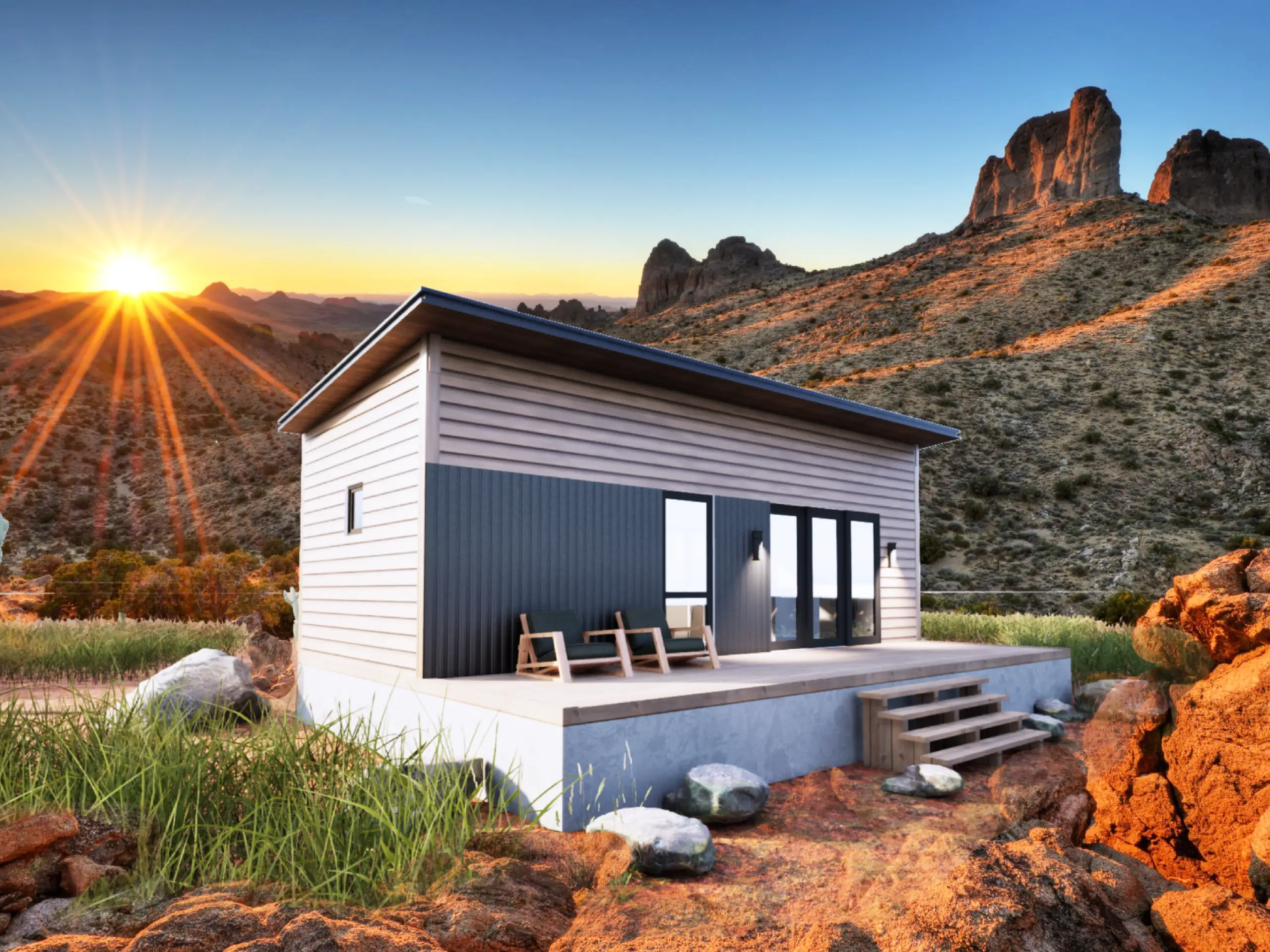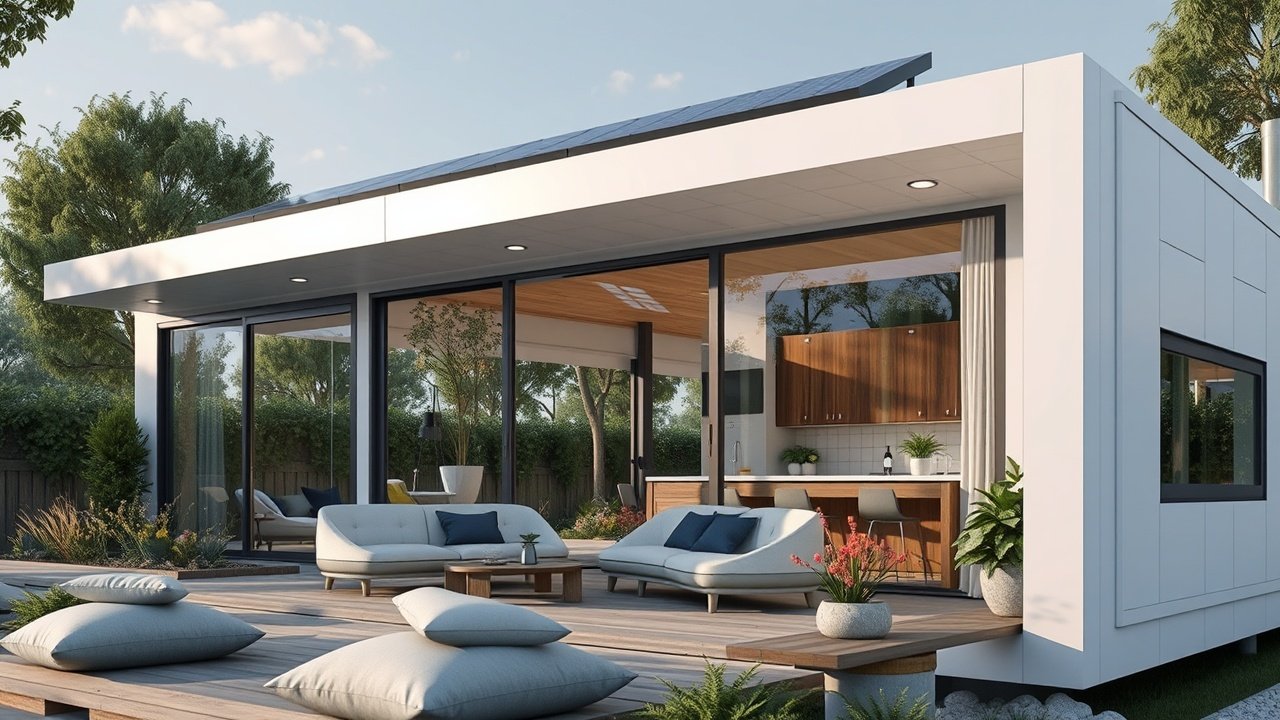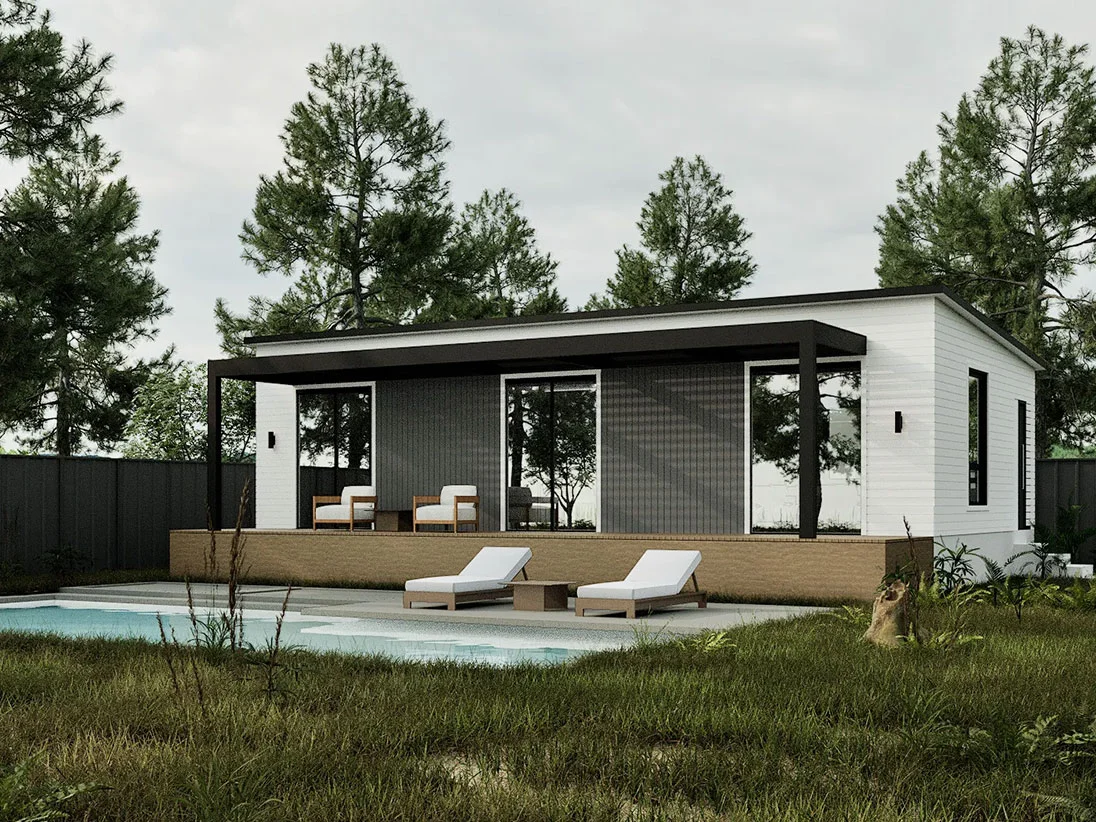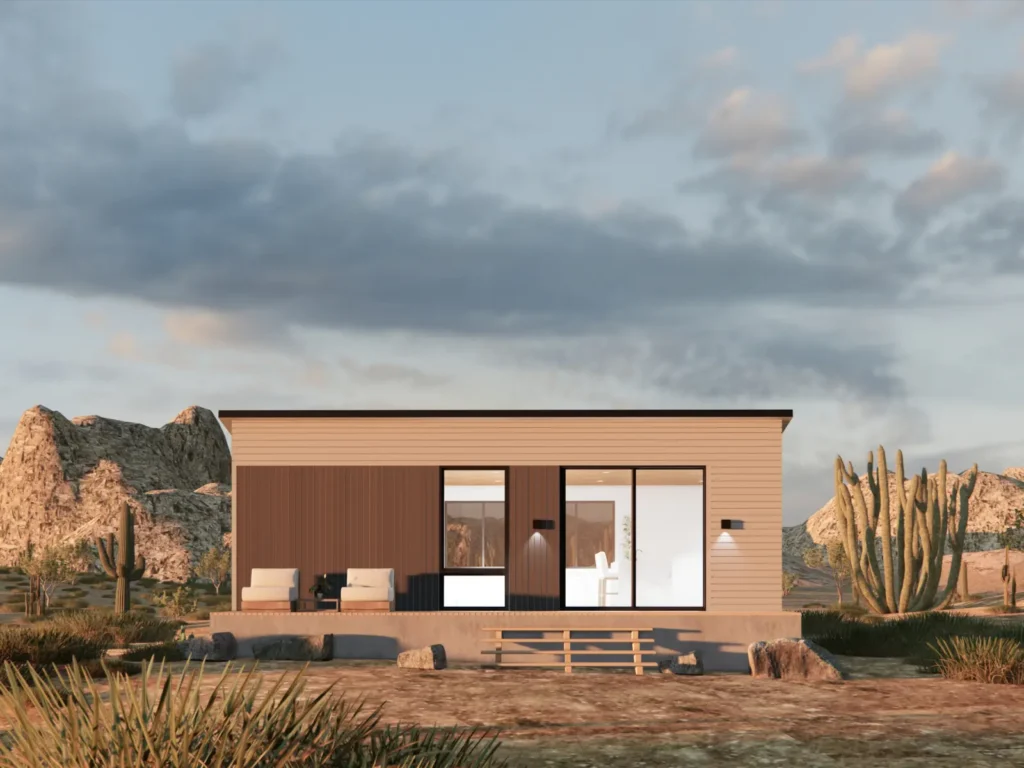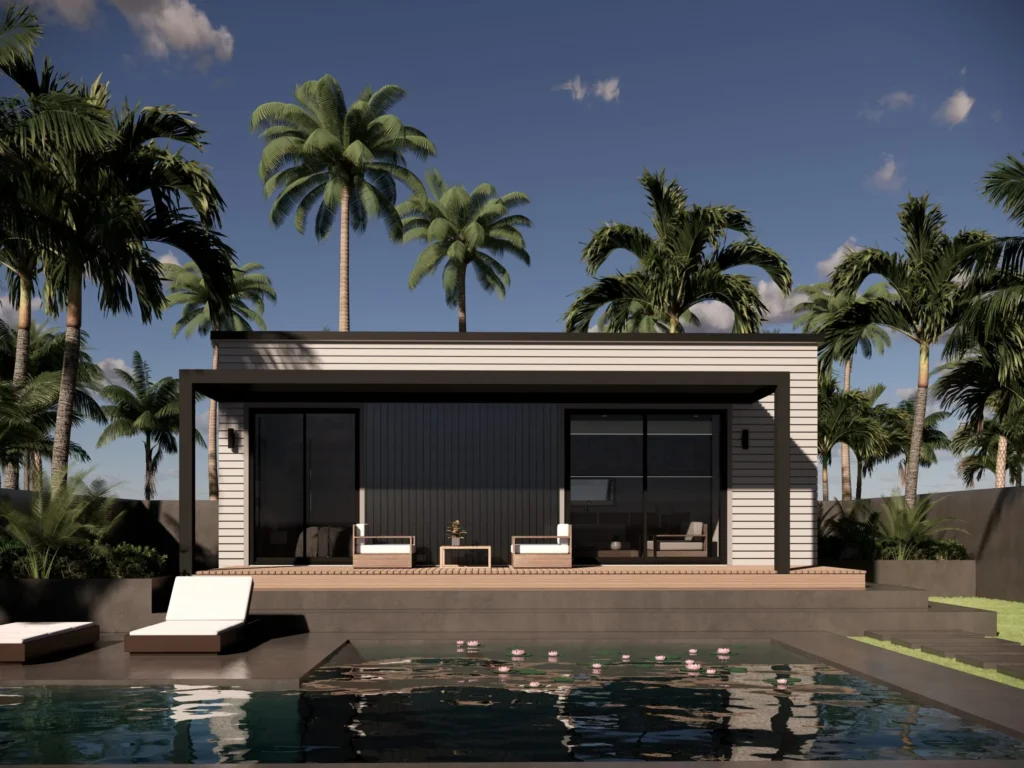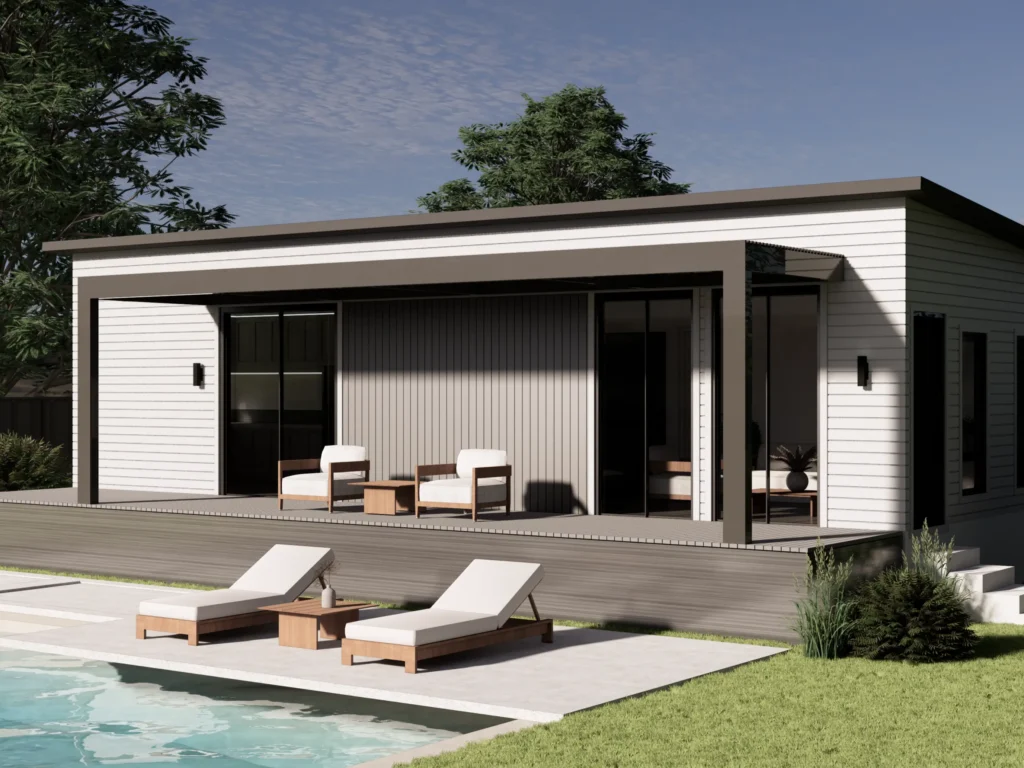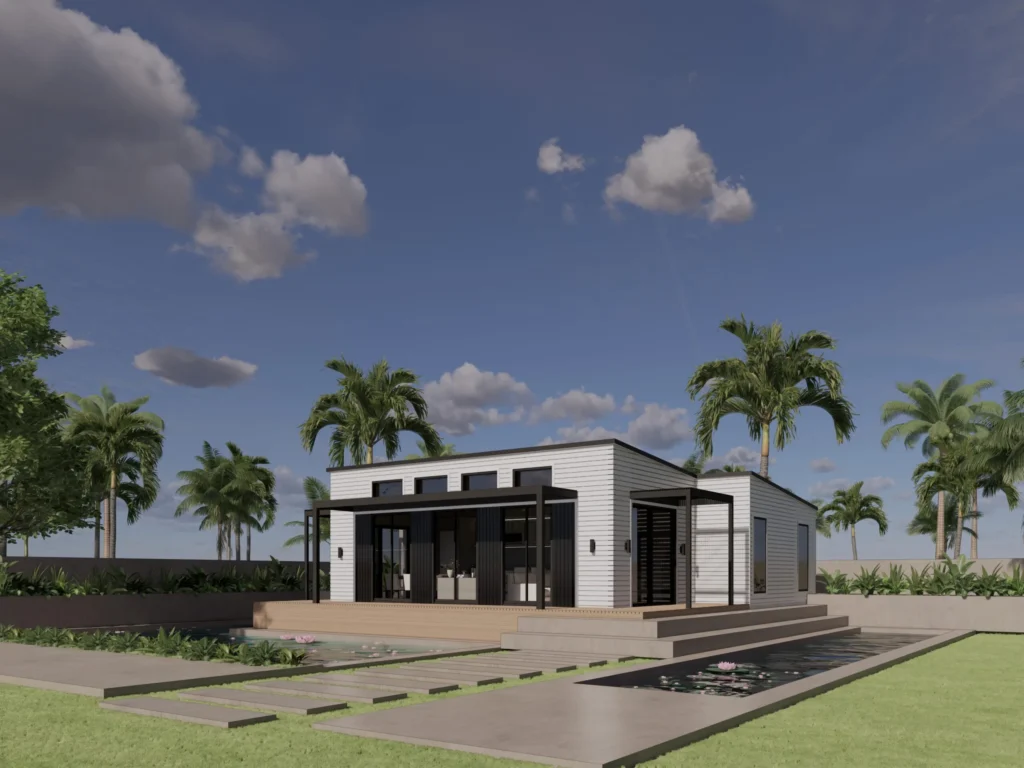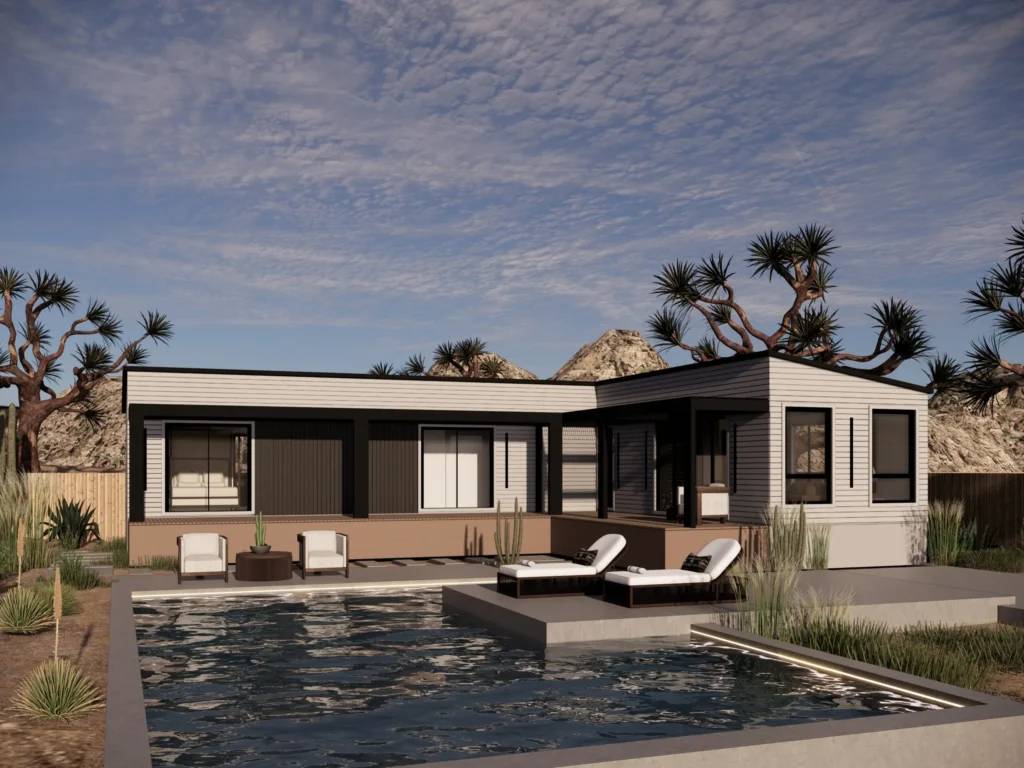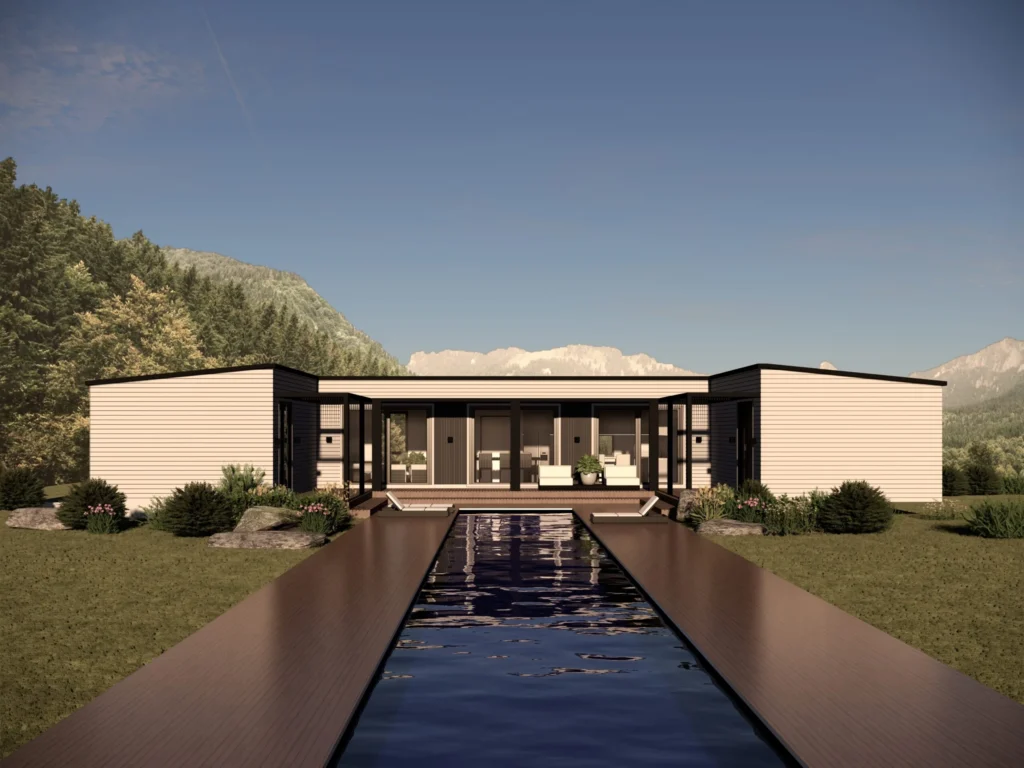Introduction
In 2024, the modular home industry continues to revolutionize the housing market, offering efficient, customizable, and often more affordable alternatives to traditional site-built homes. As interest in these innovative living spaces grows, so does the importance of understanding the full cost implications when purchasing a modular home. This comprehensive guide will break down the various expenses associated with modular homes, from the base price to hidden costs, helping you make an informed decision about your future residence.
Throughout this article, we’ll explore the nuances of modular home pricing, compare costs with traditional construction methods, and provide valuable insights into budgeting for your dream prefab home. By the end, you’ll have a clear picture of what to expect financially when embarking on your modular home journey.
Breaking Down Modular Home Costs
Base Price vs. Total Cost
When considering a modular home, it’s crucial to understand the distinction between the base price and the total cost. The base price of a modular home typically includes the manufacturing of the home’s modules in the factory. However, this figure can be misleading if taken at face value.
The total cost of a modular home encompasses much more than just the base price. Additional expenses that buyers need to consider include:
- Customization options: While modular homes offer standard designs, many buyers opt for customizations to suit their preferences. These modifications can significantly impact the final price.
- Transportation and delivery fees: Getting your home from the factory to your building site incurs costs, which vary based on distance and accessibility.
- Assembly and installation: Once delivered, your modular home needs to be assembled and installed on-site. This process requires skilled labor and equipment, adding to the overall expense.
Modular Home Base Pricing
The base price of modular homes typically ranges from $50 to $200 per square foot, depending on various factors. For a 1,500-square-foot home, this translates to a base price of $75,000 to $300,000. However, it’s important to note that this is just a starting point.
Several factors influence the base price of a modular home:
- Size and floor plan: Larger homes or those with complex layouts will naturally cost more.
- Materials and finishes: The quality of materials used, from structural elements to interior finishes, plays a significant role in determining the base price.
- Manufacturer and location: Prices can vary between different manufacturers and regions due to labor costs, material availability, and local market conditions.
Understanding these components of modular home pricing is the first step in accurately estimating the true cost of your future home. By considering both the base price and additional expenses, you’ll be better prepared to budget for your modular home project and avoid unexpected financial surprises along the way.
Hidden Costs in Modular Home Construction
When budgeting for a modular home, it’s crucial to account for expenses that are often overlooked in initial estimates. These hidden costs can significantly impact your overall budget and should be carefully considered before embarking on your modular home journey.
- Land preparation and site work: Before your modular home can be installed, the land must be properly prepared. This may include:
- Clearing and grading the site
- Creating a foundation or basement
- Installing a septic system (if necessary)
- Building retaining walls or other structures to ensure proper drainage
- Permits and inspections: Like traditional homes, modular homes must comply with local building codes and regulations. This involves:
- Obtaining necessary building permits
- Paying for required inspections throughout the construction process
- Ensuring compliance with zoning laws and homeowners’ association rules (if applicable)
- Utility connections: Connecting your new home to essential utilities is a crucial step that comes with its own set of costs:
- Water: Installation of a well or connection to municipal water supply
- Electricity: Running power lines to your home and setting up the electrical system
- Sewage: Connecting to a municipal sewer system or installing a septic tank
- Gas: If required, connecting to natural gas lines or installing propane tanks
- Landscaping and driveways: After your home is installed, you’ll need to consider the exterior:
- Creating a driveway and walkways
- Basic landscaping to prevent erosion and improve curb appeal
- Fencing or other property boundary markers
Financing Costs
The way you finance your modular home can significantly impact its total cost:
- Mortgage options: Modular homes can be financed similarly to traditional homes, but some lenders may have specific requirements or limitations.
- Interest rates and loan terms: The interest rate and length of your loan will affect your monthly payments and the total amount paid over time.
- Down payment: A larger down payment can reduce your overall financing costs but requires more upfront capital.
Tips for finding the best financing deals:
- Shop around and compare offers from multiple lenders
- Consider working with lenders experienced in modular home financing
- Look into government-backed loans (e.g., FHA, VA) that may offer favorable terms
- Improve your credit score to qualify for better interest rates
By accounting for these hidden costs and carefully considering your financing options, you’ll be better prepared to create a comprehensive budget for your modular home project. Remember, thorough planning at this stage can help prevent financial stress and unexpected expenses down the road.
Cost Comparison: Modular Homes vs. Traditional Homes
Understanding how modular home costs stack up against traditional site-built homes is crucial for making an informed decision. Let’s break down the comparison:
- Initial Construction Costs:
- Modular Homes: Generally 10-20% less expensive than traditional homes due to efficient factory construction and reduced on-site labor.
- Traditional Homes: Often more expensive due to longer construction times, weather delays, and on-site material waste.
- Construction Timeline:
- Modular Homes: Typically built in 6-12 weeks, reducing labor costs and allowing for faster occupancy.
- Traditional Homes: Can take 6-12 months or more, leading to extended labor costs and potential weather-related delays.
- Customization:
- Modular Homes: Offer predetermined design options with some flexibility for customization.
- Traditional Homes: Provide more extensive customization possibilities but at a higher cost.
- Energy Efficiency:
- Modular Homes: Often more energy-efficient due to precise factory construction, potentially leading to lower utility costs.
- Traditional Homes: Can be energy-efficient but may require additional investments in insulation and efficient systems.
- Maintenance Costs:
- Modular Homes: Generally require similar maintenance to traditional homes.
- Traditional Homes: Maintenance costs can vary widely depending on construction quality and materials used.
Long-term cost benefits of modular homes:
- Faster construction means earlier occupancy and potential rental income
- Potential energy savings due to efficient construction
- Reduced risk of weather-related damage during construction
- Lower likelihood of cost overruns due to fixed pricing models
Resale value considerations:
- Modular homes have historically appreciated at rates similar to traditional homes
- The stigma associated with “prefab” homes has diminished in recent years
- High-quality modular construction can lead to excellent long-term value retention
Budgeting for a Modular Home
Creating a realistic budget for your modular home project is essential for its success. Here’s how to approach it:
- Start with the base price of your chosen modular home design
- Add estimated costs for:
- Land purchase (if applicable)
- Site preparation and foundation
- Utility connections
- Transportation and crane services
- Assembly and finishing work
- Permits and inspections
- Landscaping and exterior features
- Include a contingency fund of 10-20% for unexpected expenses
- Factor in financing costs if you’re taking out a loan
Case studies of modular home budgets:
- Example 1: 1,500 sq ft, 3-bedroom modular home
- Base price: $150,000
- Land: $50,000
- Site prep and utilities: $30,000
- Transport and assembly: $25,000
- Finishing and landscaping: $20,000
- Permits and fees: $5,000
- Contingency (15%): $42,000
- Total: $322,000
- Example 2: 2,500 sq ft, 4-bedroom luxury modular home
- Base price: $300,000
- Land: $100,000
- Site prep and utilities: $50,000
- Transport and assembly: $40,000
- Finishing and landscaping: $50,000
- Permits and fees: $8,000
- Contingency (15%): $82,200
- Total: $630,200
Remember, these are illustrative examples, and actual costs can vary significantly based on location, design choices, and local regulations.
By carefully considering these factors and creating a comprehensive budget, you’ll be better prepared for the financial aspects of your modular home project.
Understanding Factors That Can Increase Modular Home Costs
While modular homes are often touted for their cost-effectiveness, several factors can significantly impact the final price. Understanding these potential cost increasers can help you make informed decisions and better manage your budget.
Customization and Upgrades
- High-end finishes and appliances:
- Premium countertops (e.g., granite, quartz)
- Hardwood or luxury vinyl flooring
- Custom cabinetry
- High-end appliances (e.g., smart refrigerators, professional-grade ranges)
- Smart home technology:
- Automated lighting and climate control systems
- Advanced security systems
- Integrated home entertainment systems
- Energy management solutions
- Structural modifications:
- Increased ceiling heights
- Additional windows or skylights
- Custom room layouts
- Enhanced insulation or soundproofing
Geographic Location and Accessibility
- Remote or difficult-to-access sites:
- Increased transportation costs
- Potential need for specialized equipment (e.g., larger cranes)
- Higher labor costs for on-site work
- Regional cost variations:
- Differences in labor rates across regions
- Varying costs of materials and supplies
- Local building code requirements and associated costs
- Climate considerations:
- Additional insulation for extreme climates
- Hurricane or earthquake reinforcements
- Snow load considerations for roofing
Timeframe and Construction Speed
- Rush orders:
- Expedited manufacturing can increase factory costs
- Premium rates for faster shipping and on-site assembly
- Delays and storage:
- Potential storage fees if the site isn’t ready when modules are completed
- Additional costs for protecting modules during extended storage periods
- Seasonal considerations:
- Higher costs during peak construction seasons
- Potential weather-related delays in certain climates
Additional Features and Site Work
- Basements and foundations:
- Full basements typically cost more than slab foundations
- Complex foundation work on challenging terrain
- Garages and carports:
- Attached or detached garages can significantly increase overall costs
- Custom carport designs or materials
- Outdoor living spaces:
- Decks, patios, or porches
- Outdoor kitchens or entertainment areas
- Landscaping and hardscaping features
- Energy efficiency upgrades:
- Solar panel installations
- Geothermal heating and cooling systems
- High-efficiency windows and doors
By being aware of these potential cost-increasing factors, you can make more informed decisions about which features and upgrades are essential for your modular home project. Prioritizing your needs and wants will help you balance your desired features with your budget constraints, ensuring a satisfying result without unexpected financial strain.
Cost-Saving Tips for Modular Home Buyers
While there are many factors that can increase the cost of a modular home, there are also several strategies you can employ to keep expenses in check. Here are some practical tips to help you save money on your modular home purchase:
- Stick to standard designs:
- Choose from the manufacturer’s existing floor plans
- Limit structural modifications that require engineering changes
- Opt for pre-designed upgrade packages rather than custom alterations
- Select cost-effective materials and finishes:
- Consider laminate countertops instead of stone
- Choose vinyl or carpet flooring over hardwood
- Opt for standard cabinets and fixtures rather than custom options
- Select energy-efficient appliances that balance upfront costs with long-term savings
- Timing your purchase:
- Look for end-of-year or off-season deals from manufacturers
- Be flexible with your timeline to take advantage of promotional offers
- Do some work yourself:
- Handle some of the finishing work if you’re handy (e.g., painting, landscaping)
- Coordinate utility connections to save on contractor fees
- Manage your own project to reduce or eliminate general contractor costs
- Optimize your site:
- Choose a plot of land that requires minimal site preparation
- Consider areas with lower property taxes and building permit fees
- Plan the home’s placement to minimize foundation and utility connection costs
- Explore financing options:
- Shop around for the best mortgage rates and terms
- Consider construction-to-permanent loans to avoid multiple closings
- Look into government-backed loans (FHA, VA) for potentially lower down payments and interest rates
- Bundle services:
- Negotiate package deals with manufacturers that include transportation and set-up
- Work with modular home dealers who offer turnkey solutions to potentially save on individual contractor costs
- Plan for the long-term:
- Invest in energy-efficient features that will lower utility costs over time
- Choose durable materials that will reduce maintenance and replacement costs
- Design with future needs in mind to avoid costly additions or modifications later
- Negotiate with manufacturers and contractors:
- Get multiple quotes for your project
- Ask about price matching or beating competitors’ offers
- Inquire about discounts for paying cash or making larger down payments
- Prioritize your needs:
- Focus on must-have features and save nice-to-have upgrades for later
- Consider which upgrades add the most value to your home and lifestyle
- Plan for future DIY projects to spread out costs over time
By implementing these cost-saving strategies, you can significantly reduce the overall expense of your modular home project without sacrificing quality or comfort. Remember, the key is to balance your desires with your budget constraints, making informed decisions at every stage of the process.
Certainly. Here’s a revised conclusion that encourages readers to book a consultation:
Conclusion
As we’ve explored in this comprehensive guide, the true cost of a new modular home extends far beyond the initial base price. From hidden expenses and customization options to financing considerations and cost-saving strategies, there are numerous factors to consider when budgeting for your prefab dream home.
Key takeaways from our discussion include:
- The importance of distinguishing between base price and total cost when evaluating modular home options.
- Understanding the hidden costs associated with site preparation, utility connections, and permits.
- Recognizing the long-term cost benefits of modular homes compared to traditional construction methods.
- The impact of customization, geographic location, and construction timelines on overall expenses.
- Strategies for saving money without compromising on quality or essential features.
While this guide provides a solid foundation for understanding modular home costs, every project is unique.
Ready to Take the Next Step?
If you’re intrigued by the possibilities of modular homes and want to explore whether it’s the right choice for you, we encourage you to take advantage of our Free Modular Home Suitability Checker. This tool will help you assess your specific situation and determine if a modular home or ADU is a good fit for your needs.
Click here to complete the Free Modular Home Suitability Checker
By using this checker, you’ll gain valuable insights into:
- The feasibility of a modular home or ADU on your property
- Potential cost savings compared to traditional construction
- Customization options that align with your vision
- Sustainability features that could benefit your lifestyle and the environment
Don’t miss this opportunity to take the first step towards a modern, efficient, and sustainable home. The future of housing is here, and it’s modular. Let’s explore how it can work for you!

